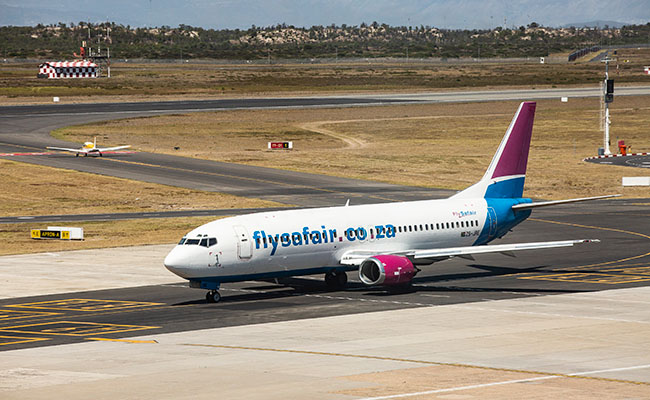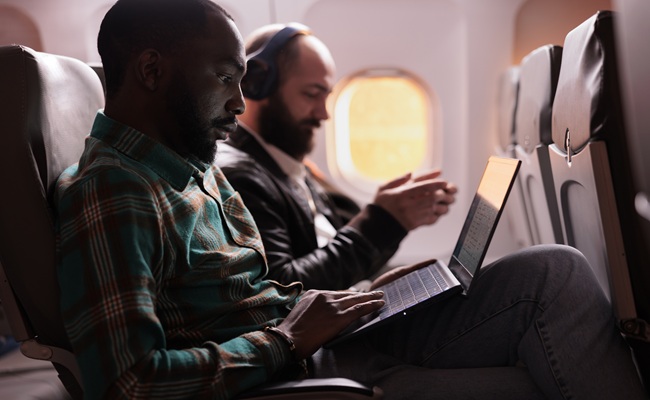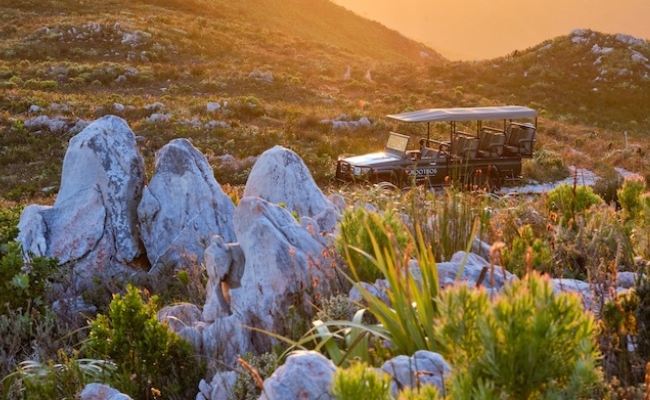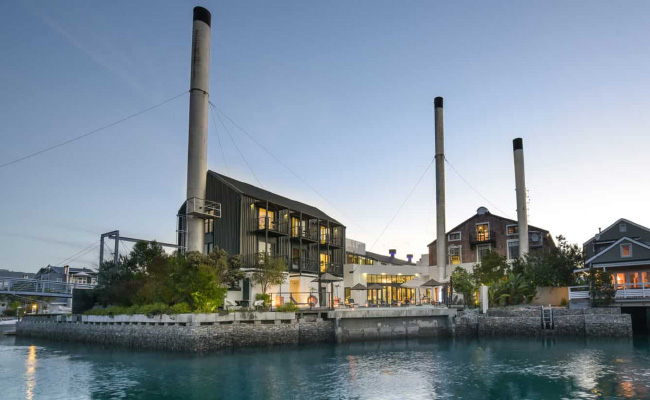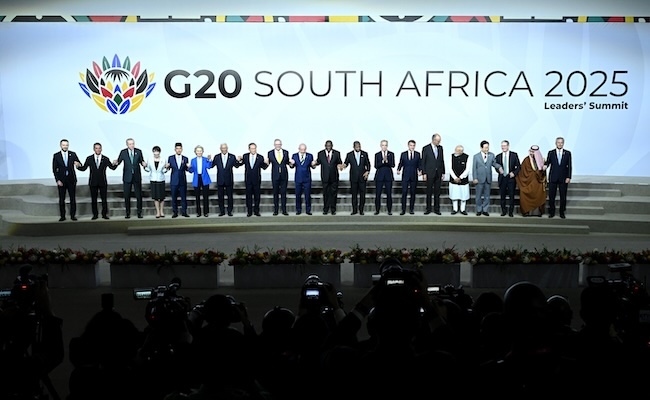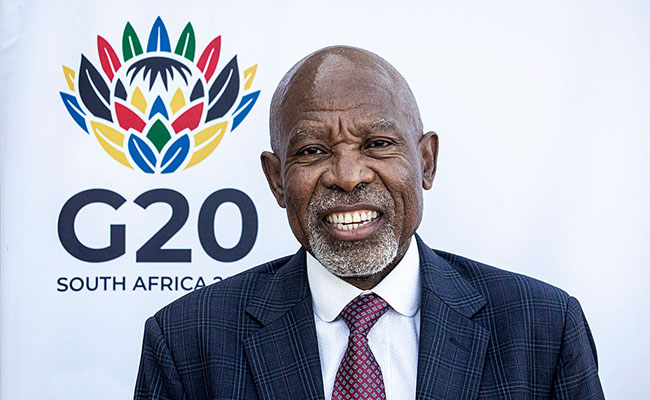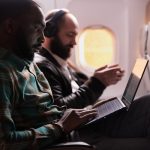There was a saying that did the rounds in local aviation circles once: “Shake a tree and a pilot will fall out.” Well, not anymore.
Many – too many – of South Africa’s qualified and experienced pilots have clambered out of their trees and jetted out of the country, along with the sector’s engineers, to better-paid prospects elsewhere. For the most part, these are in the Gulf states, where airlines like Emirates have gone on a massive hiring spree post-Covid.
It’s why there’s so much at stake in one of South Africa’s first major pilot strikes in years, and why for the first time in years pilots have that much more leverage.
The numbers have jumped around significantly since Covid, but the predicted global pilot shortage is anywhere between 50,000 and 80,000 by 2032. Aircraft-maker Boeing reckons the world will need 674,000 new pilots over the next 20 years to meet our insatiable demand for travel, with the US Bureau of Labour Statistics putting openings for airline and commercial pilots at 18,500 a year in the US alone for the next decade.
Not unreasonably, given these dynamics of supply and demand, it means pilot salaries have climbed too. According to AirlineRatings.com, before Covid, first officers in Europe earned between €21,600 and €72,000 per year. By 2024, salaries had moved up to between €51,000 and €97,000.
“Chief pilots saw even steeper increases,” it says. Last year, they earned between €120,000 and €270,000 – a heady 49% jump from the previous year’s range of €61,000-€200,000.
It puts the FlySafair captains’ salaries into perspective; while by South African standards a package of between R1.8m to R2.3m per year is high, that’s less than half what a top earner abroad might make. Given the historic quality of pilots produced by the country, who easily find work offshore, FlySafair is not competing in a small local pool for talent. Neither are the smaller charter players, once the breeding ground of experience for airline pilots. It’s a scramble through the entire aviation pecking order for skills that take years to produce.
And the job is tough; as one pilot I know puts it: it’s “95% boredom and 5% terror”. The starts are early, the days are long. One day you might be rostered to sign on at 4am, another day, 10am. A shift can be up to 12 hours. South Africa’s air traffic control, he says, is a “disaster”, leading to delays on the shift and an extension to flight duty times.
So it’s telling that the key sticking point between FlySafair and the pilots represented by trade union Solidarity isn’t even the pay but the company’s new rostering schedule, where pilots can go weeks without a full weekend off. By law, pilots have to receive one day off every seven days and two consecutive days off every 14 days – but not necessarily over a weekend. While FlySafair might have bungled this scheduling, presumably it may have had more leeway if there were more pilots available. But there aren’t.
The SAA effect
The dynamics and economics are especially complex given what has happened in South African commercial aviation over the past decade. SAA, though it’s flying again, essentially imploded. It took its own low-cost carrier Mango with it, not to mention its once formidable rival Comair, which was almost certainly undone by the R1.1bn it was owed by the national carrier.
As Ray Mahlaka wrote in a Financial Mail cover story last month, the SAA of today leases 18 aircraft, and flies about 20 times a day. “Before it entered business rescue in December 2019, it was leasing 52 aircraft,” he wrote. In the mid-2000s, SAA had a fleet of up to 65 aircraft and operated more than 50 daily flights.
Beset by one woeful managerial decision after another, combined with intense political meddling, SAA was kept aloft only thanks to a staggering R38bn of taxpayer largesse, which eventually dried up.
It’s tempting to wonder what would have happened to the gutsy low-cost start-up that was FlySafair, which launched in 2014, had SAA not hit the wall. Yet, by virtue of SAA and Comair falling out of the market, it has become the country’s de facto national carrier, with the advantages and responsibility that implies. That it now accounts for 60% of passenger flights is a testament to its management and grit, not, as some so-called experts have mused, a lack of competition in the sector.
That grit is a hard-fought daily battle against intense price pressures which, as a private company, it has to manage without any state assistance.
Consider that the cost of airline parts have probably doubled in the past three and a half years. For the operators of much smaller turbo-prop aircraft, it used to cost between $450,000 and $500,000 to overhaul a KingAir 1900 engine. It now costs $950,000. Extrapolate that to a large commercial jet airliner. Then factor in a shortage of the rare earths used in aircraft engines and the weak rand, as generally all expenses in aviation – being aircraft, maintenance and finance – are based in dollars.
Lastly, throw in an extremely cost-conscious South African customer and an economy going nowhere and you appreciate the incredibly tough juggling act that Safair has. If the economics were easier, there’d almost certainly be more competition.
As it stands, can Safair keep its costs under control enough to keep going, while satisfying the opposing demands of its two key constituencies: its pilots, and its customers?
I never thought I’d say this but perhaps the answer lies with the state. If South Africa had a functional air force, say, producing the volume and quality of pilots and engineers it once did, we’d have the necessary pool of talent to quench our need for skills. And how about a well-run national carrier – if not profitable then at least break even – to employ those skills and open up the skies?
Top image: Gallo Images/Jacques Stander.
Sign up to Currency’s weekly newsletters to receive your own bulletin of weekday news and weekend treats. Register here.



